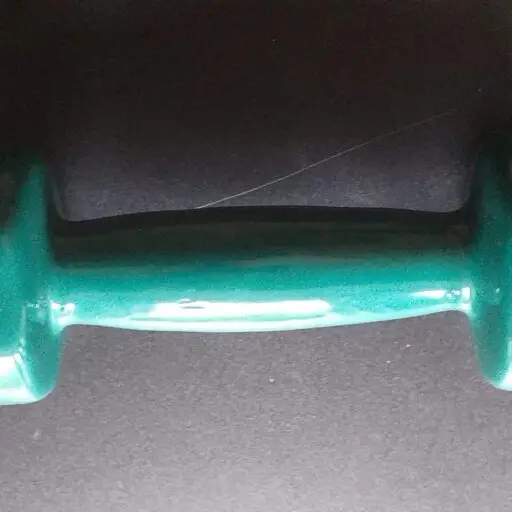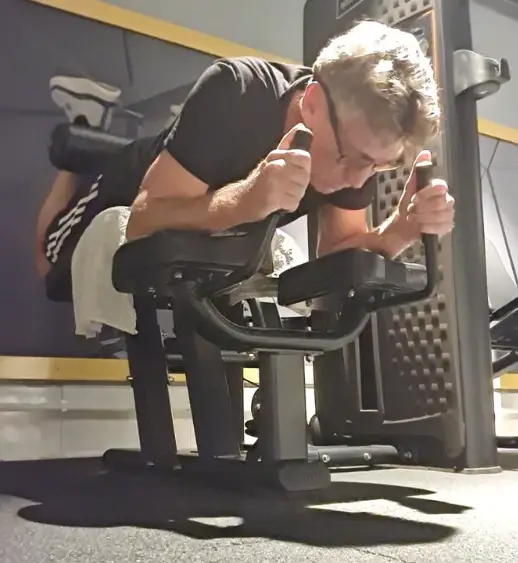All about the Leg Curl
(Legs)
BENEFITS & MUSCLES WORKED: Hamstrings, Knee Strength, Injury Prevention
START POSITION: Lie on the Leg Curl Bench and hook your ankles under the footrests behind you as shown.
The machine must be set up correctly to match your physique before you start. You must also ensure that the machine is in good working condition, with no wobbles, and that it operates smoothly. If it doesn’t, then don’t use the machine. It is too risky because, without perfect form, this exercise is dangerous and can easily cause knee injuries.
The knees should be just hanging over the edge, with maximum support provided at the top edge of the knees and lower Quads.
Maintain a neutral spine and gaze at the floor directly in front of your nose. Grab the handles – if they are positioned as shown in the photo, it helps to place your thumbs on top – and ensure your elbows and forearms are well supported.
NOTES: Difficulty Rating: 45%
When starting with the Leg Curl, keep weights low and reps high. Hamstrings are well-suited to high reps, but too much weight can do more harm than good.
Leg Press Machines vary between gyms, and many of them are of poor design or not well-maintained. If the exercise doesn’t feel natural (even with light weights), stop using it and seek advice before continuing. The backwards and forwards motion of the Legs should be as smooth as possible, and, depending on the machine design, you’re usually OK to perform the Leg Press with a full Range of Motion.
If you don’t have access to a suitable Leg Curl Machine, then you should explore the Nordic Hamstring Curl.
To complete this exercise, you must secure your ankles on the floor behind you or ask someone to hold your feet down with their body weight. The Nordic Hamstring Curl is quite challenging for most people. Still, it is made easier by incorporating isometric pauses at various points and performing small push-ups to assist the Hamstrings as you come back up.
Whether you use a Leg Curl Machine or a Nordic Hamstring Curl, you should mix in other Hamstring exercises and stretches, such as the Single-Leg Bridge (using a bench), Straight-Leg Deadlift, and Single-Leg RDL (Romanian Deadlift). Strengthening the Hamstrings is essential to reduce the Risk of Injury, especially for Runners, Footballers, and Jumpers. There are also several great Hamstring Stretches included in my Mojoh Method PILATES 1 Session—notably the Toe Touch, Shelf Ham Stretch, Sitting Ham Stretch, and the Overhead Leg Ham.
As a serious athlete (particularly Footballers), you should do all or most of these exercises at least once or twice per week (along with everything else you have to do). A badly torn Hamstring may take several months to heal, and you’ll be unable to train during the recovery period. So bolster your chances of a successful athletic career and make sure your Hamstrings are well-protected from Injury.

